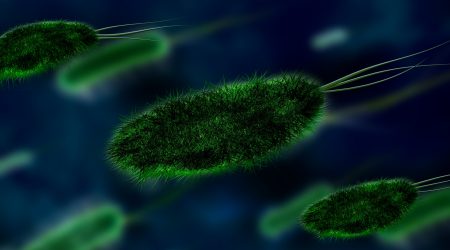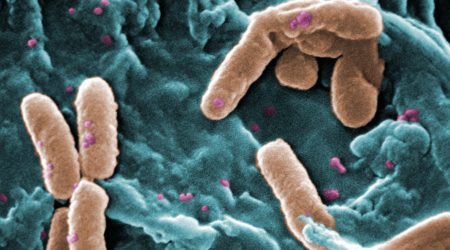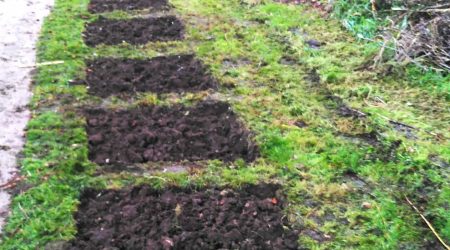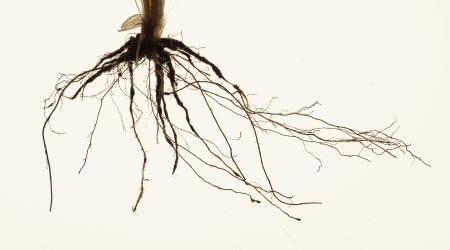Pioneering work in the Miller group using soil sensors, biochemistry and ecology offers the potential to reduce the environmental impact of agriculture
Soil is crucial to life, providing plants with the nutrients they need to grow. One of the most important nutrients in the soil is nitrogen, it is a component of all proteins, and is found in all living systems.
Professor Tony Miller’s group studies how plants sense and transport nitrogen and other important nutrients, and how plants respond to changes in nitrogen supply. “To understand how plants sense and respond to nitrogen, it’s really important to know what is going on in the soil,” explains Tony.
Currently, nitrogen fertiliser is added to crops to boost crop performance. However, the use and production of fertiliser has detrimental impacts on the environment. Firstly, the production of fertilisers is a fossil-fuel intensive process that is a major contributor to greenhouse gas emissions from agriculture.
Additionally, up to 60 per cent of the nitrogen fertiliser applied to crops is not taken up and used by plants. The remaining nitrogen can be lost to the air or leaches through the soil into the environment, where it disrupts local biodiversity.
“If we can use fertiliser more efficiently, that would go a long way towards reducing the inputs needed to produce crops, meaning that farmers would need to use less, reducing their costs and the detrimental effects on the environment,” explains Tony.
His team have found a promising way to help with this problem. They are developing sensors that allow farmers to monitor the amount of nitrogen in the soil, so they can apply fertiliser only when the plants really need it.
The innovation came about from research to understand how the nutrients inside plants are transported. “We had developed a tool for monitoring nitrogen in plant cells and we realised that the same technology could be used to measure nitrogen, nitrates specifically, in the soil.”
Since then, the team worked through many iterations of soil sensors, refining their design and capability. “When we first started, we used pipette tips and earplugs. But there were problems. For example, they needed to be replaced every six weeks as they dried up,” explains Dr Yi Chen who works on the project.
“We’ve been through all sorts of prototypes, including one we called “the flute” because of the way it looked, but we didn’t pursue that one,” continues Tony.
After trialling many prototypes, the team developed a microchip-based sensor that allows data to be logged over months, and by using these sensors in soil columns and also in the field, they can precisely measure the amount of nitrate at different soil depths.
This set-up is providing new insights into nutrients inside the soil. “The nitrate not only needs to be in the soil, but it needs to be there in a form that is available to the plant. If the soil is too dry, the plant cannot absorb the nitrate. It needs to be in a solution. But too much water and it can wash away,” explains Yi.
The team have also been using an innovative sensor set-up to test the performance of slow-release fertilisers, which gives a slow trickle of nitrogen through the season. Yi says, “The results look promising and should mean that less nitrogen applications will be needed.”
With the support of an Innovate UK grant, the team are expanding the use of their sensors beyond the laboratory, working with Plant Bioscience Limited (PBL) and Zimmer & Peacock to develop a soil sensor for use on farms and testing the sensor on wheat and potato crops with farmers.
The product they are developing will be wireless, so a farmer can remotely monitor their soil using a phone or laptop to see how much nitrogen is in the field. Then, if they need to get out there and make an application of nitrogen they can, rather than just applying routinely at a particular growth stage as is currently the case.
Tony says, “It’s great to see something developed that will be useful to farmers. The plan is for them to save money on the fertiliser and help reduce the environmental impact because they won’t need to use so much.
“Since local farmers heard about this, they have been really supportive and interested. We’re just entering the second year of testing when the farmers are going to start making decisions about how much fertiliser to apply based on the data. That really will be the test!”
Alongside their work on soil sensors, other members of the Miller group are exploring aspects of the soil and plant nutrients. Dr Maria Hernandez-Soriano is a soil chemist, and during her Daphne Jackson Trust Research Fellowship she has been exploring the rhizosphere – the soil surrounding the plant roots where the biological, chemical and physical features of the soil are influenced by the roots.
“It has become evident that the soil microbiome is a major contributor to the provision of essential nutrients to crops. I am exploring more than 100 ancient landraces of the Watkins wheat collection and some modern cultivars, looking at the microbiome composition in the rhizosphere and how it drives soil processes.”
Maria has identified over 15,000 microbial species in the rhizosphere and is looking at how compounds produced by wheat roots shape the composition and functions of these communities. Maria and Tony, in collaboration with Simon Griffiths and Luzie Wingen (Crop Genetics), are leading a new project funded by the European Joint Programme on Soil (EJP-SOIL) which will work to enhance the potential beneficial effects of wheat cultivation on soil health. In particular this project aims to identify root traits that can improve soil structure and optimise soil biological processes.
Meanwhile, Marco Fioratti Junod, a soil ecologist, is looking at the impact of agricultural practices, such as cover crops and tilling, on soil health, studying communities of soil fauna – from earthworms to bacteria. He says, “All processes in soil are mediated by the soil food web. What lives in the soil is not merely a passive product of cropping, but a complex network, with important feedback effects on soil health and nutrient availability.”
Coming towards the end of his PhD, Marco reflects, “I have found that agricultural practices impact below-ground biodiversity. However, it is not a simple linear relationship, where higher-intensity agriculture produces less biodiversity and ecological function. It’s more complex.”
The research by Miller group helps give a fuller picture of life in the soil, and how we can help plants get the nutrients they need while ensuring a healthy planet in a changing climate. “Soil is also really important for carbon sequestration. With the extremes of climate we face, the questions we’re asking about plant nutrients and soil health become even more important,” says Professor Miller.











